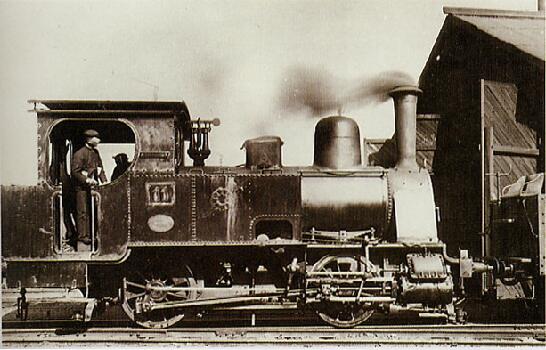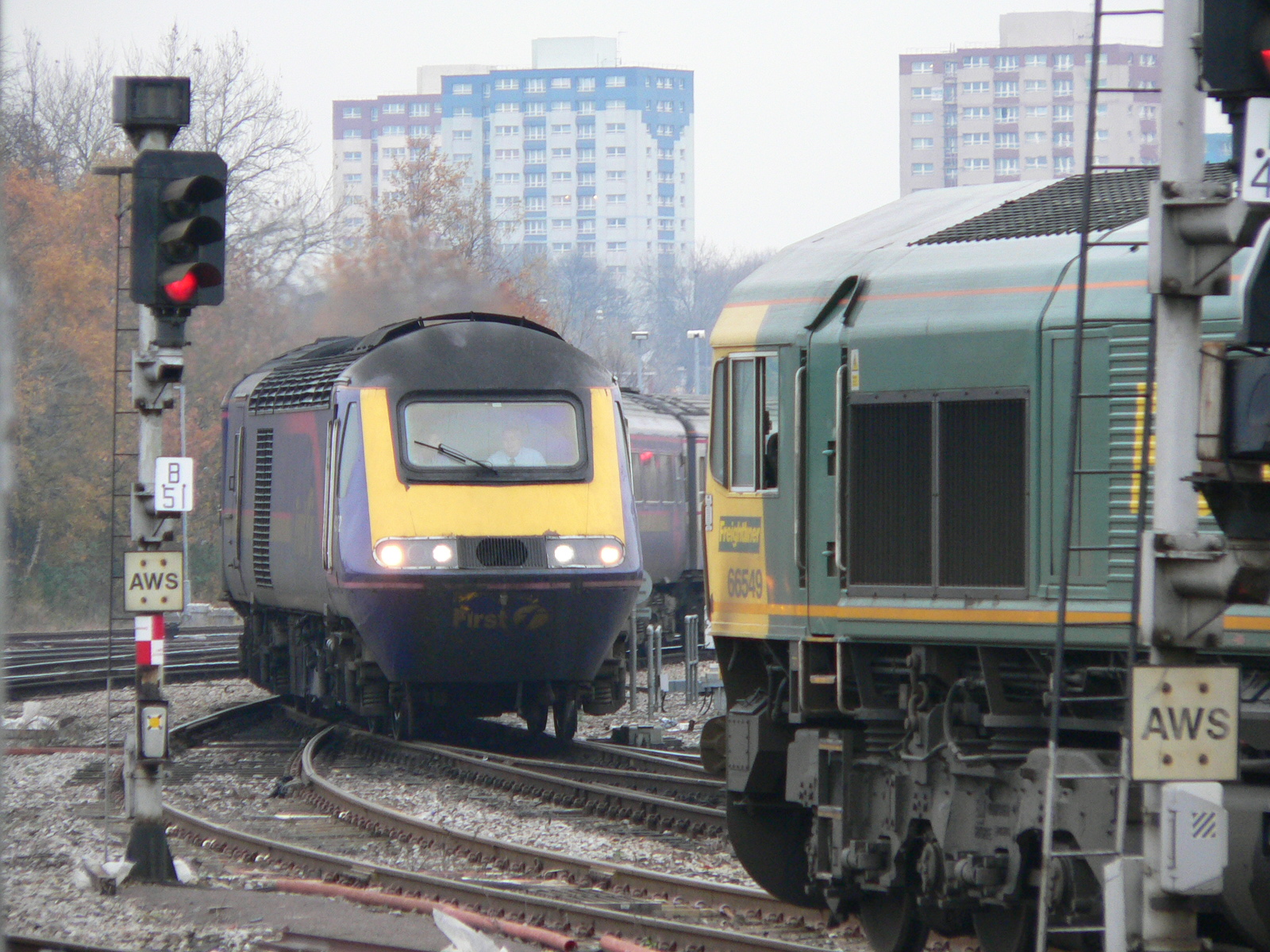|
Gotōji Line
The is a Japanese railway line in Fukuoka Prefecture connecting Tagawa-Gotōji Station in the city of Tagawa and Shin-Iizuka Station in the city of Iizuka. It is part of the JR Kyushu network. Basic data *Operator, distances: **Kyushu Railway Company (JR Kyushu) (Services and tracks) ***Tagawa-Gotōji – Shin-Iizuka: *Gauge: Narrow gauge, *Stations: 6 *Double-tracking: None *Electrification: None *Railway signalling: Special automatic Station list * All stations are located in Fukuoka Prefecture. * Rapid trains, which only operate in the direction of Tagawa-Gotōji, stop at stations marked "●" and pass stations marked "↑". History The Hōshū Railway Co. opened the central section of the line in 1897 to haul freight, the company merging with the Kyushu Railway was a company that built and operated railways in Kyushu, one of four main islands of Japan. Most of its lines came under the control of Japanese Government Railways following nationalization in 190 ... [...More Info...] [...Related Items...] OR: [Wikipedia] [Google] [Baidu] |
Fukuoka Prefecture
is a Prefectures of Japan, prefecture of Japan located on the island of Kyūshū. Fukuoka Prefecture has a population of 5,109,323 (1 June 2019) and has a geographic area of 4,986 Square kilometre, km2 (1,925 sq mi). Fukuoka Prefecture borders Saga Prefecture to the southwest, Kumamoto Prefecture to the south, and Ōita Prefecture to the southeast. Fukuoka is the capital and largest city of Fukuoka Prefecture, and the largest city on Kyūshū, with other major cities including Kitakyushu, Kurume, and Ōmuta, Fukuoka, Ōmuta. Fukuoka Prefecture is located at the northernmost point of Kyūshū on the Kanmon Straits, connecting the Tsushima Strait and the Seto Inland Sea across from Yamaguchi Prefecture on the island of Honshu, and extends south towards the Ariake Sea. History Fukuoka Prefecture includes the Old provinces of Japan, former provinces of Chikugo Province, Chikugo, Chikuzen Province, Chikuzen, and Buzen Province, Buzen. Shrines and temples Kōra taisha, Sumiyoshi-j ... [...More Info...] [...Related Items...] OR: [Wikipedia] [Google] [Baidu] |
Narrow Gauge
A narrow-gauge railway (narrow-gauge railroad in the US) is a railway with a track gauge (distance between the rails) narrower than . Most narrow-gauge railways are between and . Since narrow-gauge railways are usually built with Minimum railway curve radius, tighter curves, smaller structure gauges, and lighter Rail profile, rails; they can be less costly to build, equip, and operate than standard- or broad-gauge railways (particularly in mountainous or difficult terrain). Lower-cost narrow-gauge railways are often used in mountainous terrain, where engineering savings can be substantial. Lower-cost narrow-gauge railways are often built to serve industries as well as sparsely populated communities where the traffic potential would not justify the cost of a standard- or broad-gauge line. Narrow-gauge railways have specialised use in mines and other environments where a small structure gauge necessitates a small loading gauge. In some countries, narrow gauge is the standard: Ja ... [...More Info...] [...Related Items...] OR: [Wikipedia] [Google] [Baidu] |
Kyushu Railway
was a company that built and operated railways in Kyushu, one of four main islands of Japan. Most of its lines came under the control of Japanese Government Railways following nationalization in 1907, and many are now operated by Kyushu Railway Company. History The company was incorporated on August 15, 1888 in Fukuoka, Fukuoka. The first of the railway, between Hakata Station in Fukuoka and Chitosegawa temporary station in Asahi, Saga (near Kurume, Fukuoka), opened on December 11, 1889 as the first railway in Kyushu. The company expanded the railway by means of both construction and acquisition of other companies. As of 1907, it operated of railways in Fukuoka Prefecture, Fukuoka, Kumamoto Prefecture, Kumamoto, Nagasaki Prefecture, Nagasaki, Ōita Prefecture, Ōita and Saga Prefecture, Saga prefectures in northern Kyushu. On July 1, 1907, the entire operation of the company was purchased by the government of Japan under the Railway Nationalization Act. Consequently, the comp ... [...More Info...] [...Related Items...] OR: [Wikipedia] [Google] [Baidu] |
Kama, Fukuoka
is a city located in Fukuoka Prefecture, Japan. is a city located in Fukuoka Prefecture, Japan. , the city had an estimated population of 34,800 in 18035 households, and a population density of 260 persons per km². The total area of the city is . Geography Kama is located almost in the center of Fukuoka Prefecture. The Onga River flows through the central part of the city, and the southern part of the city is surrounded by the Chikushi Mountains, which are over 1,000 meters above sea level. Neighboring municipalities Fukuoka Prefecture * Asakura * Chikusen * Iizuka * Kawasaki * Keisen * Soeda *Tagawa * Tōhō Climate Kama has a humid subtropical climate (Köppen ''Cfa'') characterized by warm summers and cool winters with light to no snowfall. The average annual temperature in Kama is 16.9 °C. The average annual rainfall is 8877 mm with September as the wettest month. The temperatures are highest on average in August, at around 30.28 °C, and lowest in Januar ... [...More Info...] [...Related Items...] OR: [Wikipedia] [Google] [Baidu] |
Heisei Chikuhō Railway Itoda Line
The is a 6.8 km railway line owned by the Heisei Chikuhō Railway. The line runs north from Tagawa to Kanada Station, all within Fukuoka Prefecture. History The Itoda Line was built in two parts. The first part was built in 1897 as a branch line by the , a third-sector railway to transport coal from the Chikuhō Coal Mine. It ran north from Gotōji Station (now Tagawa-Gotōji Station) to Miyatoko Station (now Itoda Station). Hōshū Railway was acquired by Kyushu Railway in 1901, which was then nationalized in 1907 into Japanese Government Railways (JGR) under the Railway Nationalization Act. After being nationalized, the line was known as the . In 1927, another third-sector railway company, , built the section between Miyatoko and Kanada Station. Within the same year, the line was transferred to the , who then changed their name to in 1933. The line was sold in 1943 during the Second World War to JGR, who operated the entire line as the Itoda Line. With the privatiz ... [...More Info...] [...Related Items...] OR: [Wikipedia] [Google] [Baidu] |
Railway Signalling
Railway signalling (), or railroad signaling (), is a system used to control the movement of railway traffic. Trains move on fixed rails, making them uniquely susceptible to collision. This susceptibility is exacerbated by the enormous weight and inertia of a train, which makes it difficult to quickly stop when encountering an obstacle. In the UK, the Regulation of Railways Act 1889 introduced a series of requirements on matters such as the implementation of interlocked block signalling and other safety measures as a direct result of the Armagh rail disaster in that year. Most forms of train control involve movement authority being passed from those responsible for each section of a rail network (e.g. a signalman or stationmaster) to the train crew. The set of rules and the physical equipment used to accomplish this determine what is known as the ''method of working'' (UK), ''method of operation'' (US) or ''safe-working'' (Aus.). Not all these methods require the use of p ... [...More Info...] [...Related Items...] OR: [Wikipedia] [Google] [Baidu] |
List Of Current Systems For Electric Rail Traction
This is a list of the power supply systems that are, or have been, used for railway electrification. Note that the voltages are nominal and vary depending on load and distance from the substation. , many trams and trains use on-board solid-state electronics to convert these supplies to run three-phase AC traction motors. Tram electrification systems are listed here. Key to the tables below * Volts: voltage or volt * Current: ** DC = direct current ** # Hz = frequency in hertz (alternating current (AC)) *** AC supplies are usually single-phase (1φ) except where marked three-phase (3φ). * Conductors: ** overhead line or ** conductor rail, usually a third rail to one side of the running rails. Conductor rail can be: *** top contact: oldest, least safe, most affected by ice, snow, rain and leaves. Protection boards are installed on most top contact systems, which increases safety and reduces these affections. *** side contact: newer, safer, less affected by ice, snow, rain and lea ... [...More Info...] [...Related Items...] OR: [Wikipedia] [Google] [Baidu] |
Rail Gauge
In rail transport, track gauge is the distance between the two rails of a railway track. All vehicles on a rail network must have wheelsets that are compatible with the track gauge. Since many different track gauges exist worldwide, gauge differences often present a barrier to wider operation on railway networks. The term derives from the metal bar, or gauge, that is used to ensure the distance between the rails is correct. Railways also deploy two other gauges to ensure compliance with a required standard. A ''loading gauge'' is a two-dimensional profile that encompasses a cross-section of the track, a rail vehicle and a maximum-sized load: all rail vehicles and their loads must be contained in the corresponding envelope. A '' structure gauge'' specifies the outline into which structures (bridges, platforms, lineside equipment etc.) must not encroach. Uses of the term The most common use of the term "track gauge" refers to the transverse distance between the inside surfaces ... [...More Info...] [...Related Items...] OR: [Wikipedia] [Google] [Baidu] |
JR Kyushu
The , also referred to as , is one of the seven constituent companies of Japan Railways Group (JR Group). It operates intercity rail services within Kyushu, Japan. It formerly operated the Beetle hydrofoil service across the Tsushima Strait between Fukuoka and Busan, South Korea, before its discontinuation in 2024. It also operates hotels, restaurants, and drugstores across its service region. JR Kyushu's headquarters are in Hakata-ku, Fukuoka. ." Kyushu Railway Company. Retrieved on March 27, 2010. History When was divided in 1987, Kyushu Railway Company inherited its assets and operations on the island of |
Iizuka, Fukuoka
is a city in Fukuoka Prefecture, Japan. , the city had an estimated population of 124,757 in 63833 households, and a population density of 580 persons per km2. The total area of the city is . Geography Iizuka is the central city of the Chikuho region located in the center of Fukuoka Prefecture, approximately 35 kilometers east of Fukuoka City and approximately 40 kilometers southwest of the center of Kitakyushu City. The Onga River, a first-class river, flows through the central part of the city, and the area forms an urban area. From the northwestern part of the city to the western and southwestern parts of the city, there are mountains ranging in height from 400 to 900 meters, including Mt. Mikoriyama (935.9 meters) and Mt. Toishi (828 meters). There are also several mountains in the eastern part of the city that are between 200 and 300 meters high, forming a small mountain range. Therefore, the central and northern parts of the city are a basin surrounded by mountains. Yagi ... [...More Info...] [...Related Items...] OR: [Wikipedia] [Google] [Baidu] |




